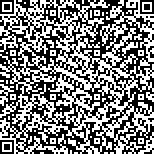| 摘要: |
| [摘要] 目的 探讨超声心动图在评估冠心病合并房颤患者左房功能中的应用价值。方法 选取2012-09~2013-09该院收治的冠心病合并房颤患者25例和冠心病合并窦性心率患者22例分别作为房颤组和窦性心律组,取同期入院体检正常者20名作为对照组,均行彩色多普勒超声检查。分别采用常规超声心动图测量左房大小及左房容积,多普勒技术测量二尖瓣血流频谱、肺静脉血流频谱情况。结果 房颤组左房大小(LAD)、左房最大容积(LAVmax)、左房最小容积(LAVmin)分别为(43.26±2.81)mm、(41.61±2.63)ml、(20.12±1.53)ml,明显高于窦性心率组和对照组,其中对照组最低,差异有统计学意义(P<0.05)。房颤组和窦性心律组E、E-VTI、A、A-VTI、E/A均与对照组存在显著差异(P<0.05),其中房颤组E、E-VTI升高,窦性心律组降低;房颤组A、A-VTI降低,窦性心律组升高,差异有统计学意义(P<0.05)。与对照组比较,窦性心率组Ar降低,差异有统计学意义(P<0.05),但其他肺静脉血流频谱相关指标比较差异无统计学意义(P>0.05)。与对照组比较,房颤组S、S-VTI、Ar降低,D峰、D-VTI升高,S/D<1,差异有统计学意义(P<0.05)。结论 超声心动图能够准确反映冠心病合并房颤患者左房功能。 |
| 关键词: 冠心病 房颤 超声心动图 左房功能 |
| DOI:10.3969/j.issn.1674-3806.2016.05.19 |
| 分类号:R 541 |
| 基金项目: |
|
| The value of echocardiogram in the assessment of left atrial function in patients with coronary heart disease and atrial fibrillation |
|
YU De-fu
|
|
Department of Ultrasound, the People′s Hospital of Meizhou City, Guangdong 514031, China
|
| Abstract: |
| [Abstract] Objective To investigate the application value of echocardiogram in evaluating the left atrial function in patients with coronary artery disease and atrial fibrillation.Methods Twenty-five cases of patients with coronary heart disease and atrial fibrillation and 22 cases of patients with atrial fibrillation and sinus arrhythmia were taken respectively as the atrial fibrillation group(n=25) and sinus rhythm group(n=22). Other 20 persons admitted to the hospital for medical examination during the same period were taken as the control group(n=20). They were all examined by color Doppler ultrasonography. The size and volume of left atrial were respectively measured by conventional echocardiography and Doppler technique was used to measure the blood flow spectrum of the mitral valve and pulmonary venous flow spectrum.Results The data of LAD, LAVmax and LAVmin in the atrial fibrillation group were respectively (43.26±2.81)mm, (41.61±2.63)ml and (20.12±1.53)ml, which were significantly higher than those in the sinus rhythm group and the control group, but the data in the control group were the lowest(P<0.05). There were significant differences in the data of E, E-VTI, A, A-VTI and E/A between the atrial fibrillation group, sinus rhythm group and the control group(P<0.05). Among them, the data of E, E-VTI in the atrial fibrillation group increased, while the data of E, E-VTI in the sinus rhythm group decreased, and the data of A and A-VTI in the atrial fibrillation group decreased while the data of E and E-VTI in the sinus rhythm group increased, with significant difference(P<0.05). Compared with the control group, the data of A in the sinus rhythm group decreased(P<0.05). But the indexes of other pulmonary venous blood spectrum had no significant differences(P>0.05). Compared with the control group, the data of S, S-VTI in the atrial fibrillation group decreased but the data of D peak and D-VTI increased, S/D<1,(P<0.05).Conclusion Echocardiogram can accurately reflect left atrial function in patients with atrial fibrillation and atrial fibrillation. |
| Key words: Coronary heart disease Atrial fibrillation Echocardiogram Left atrial function |

